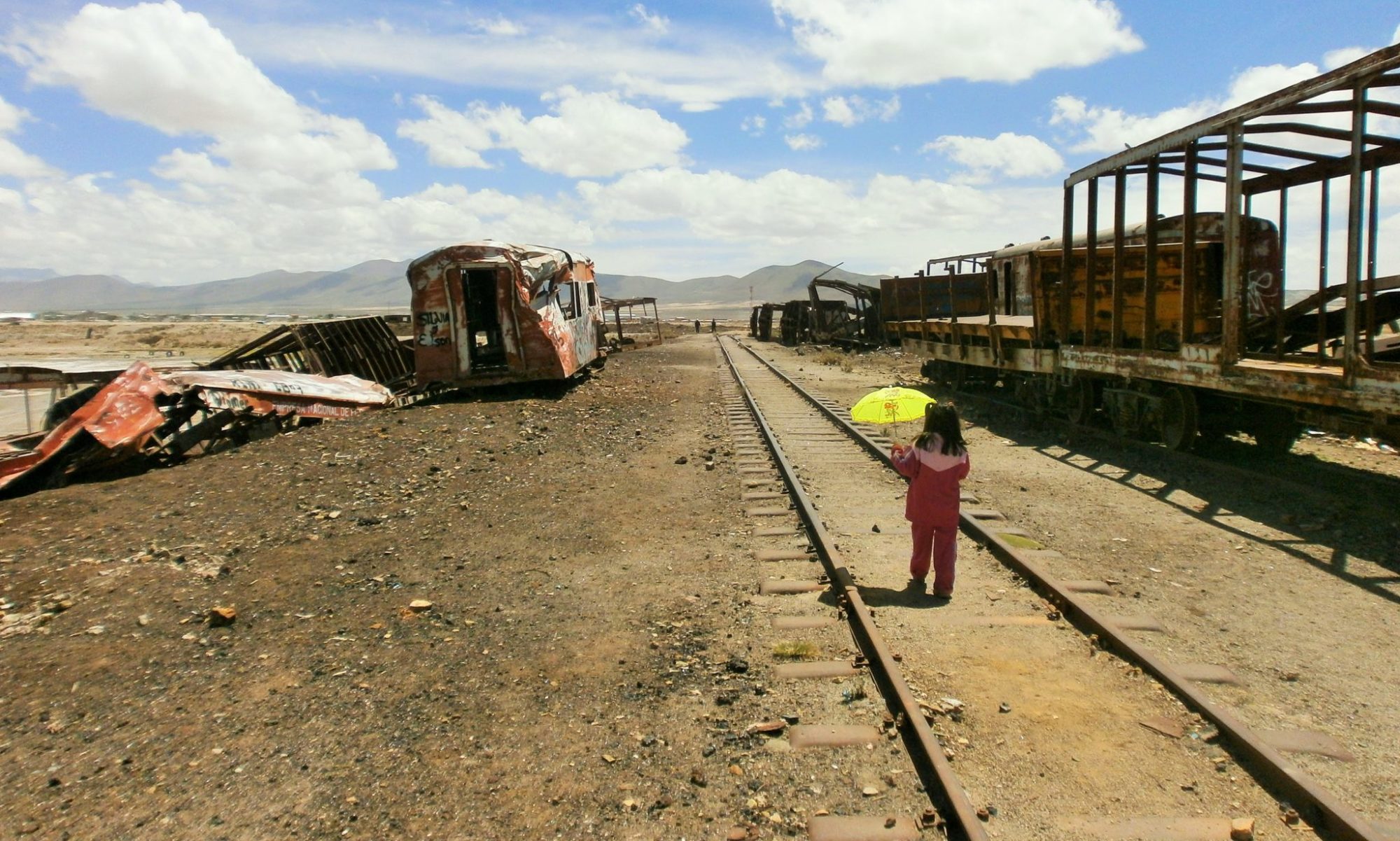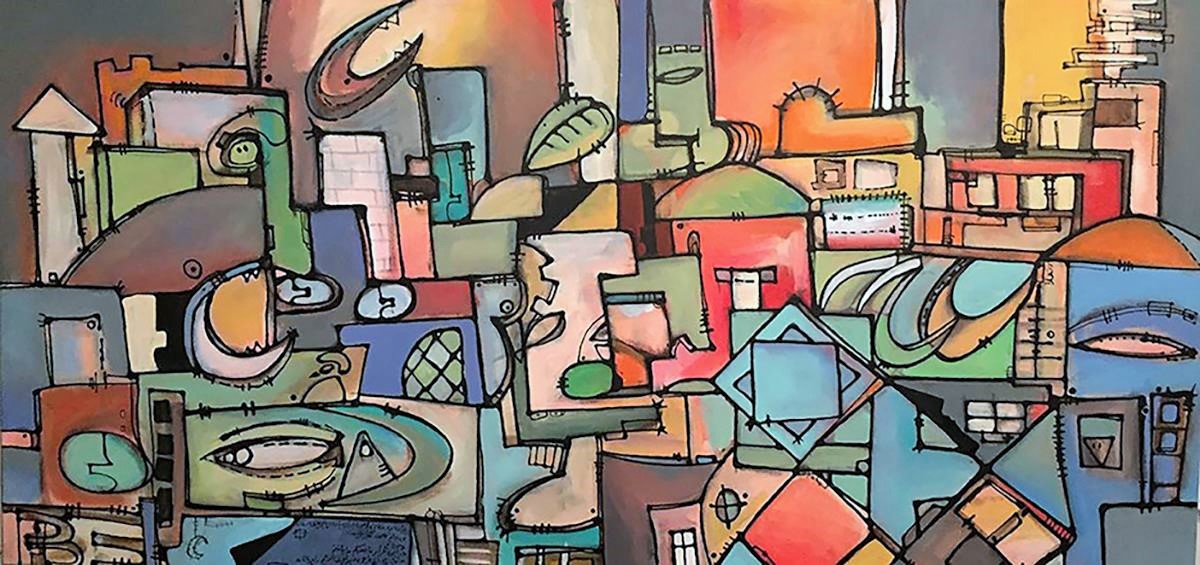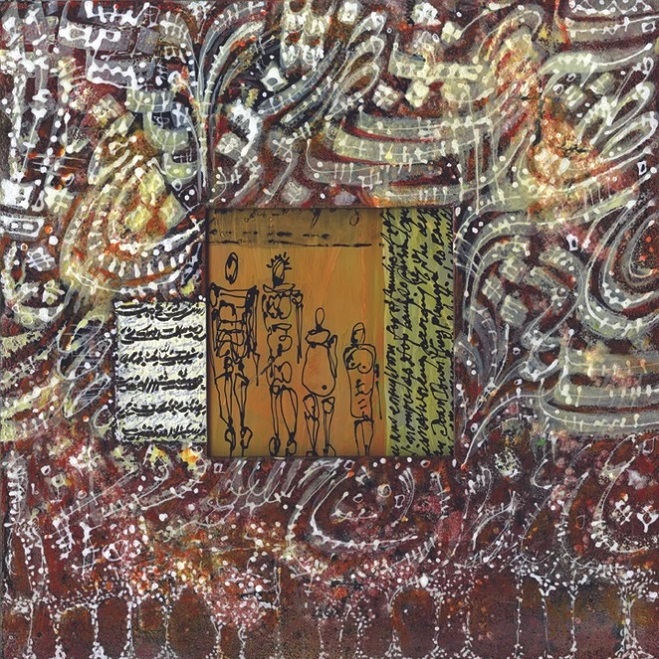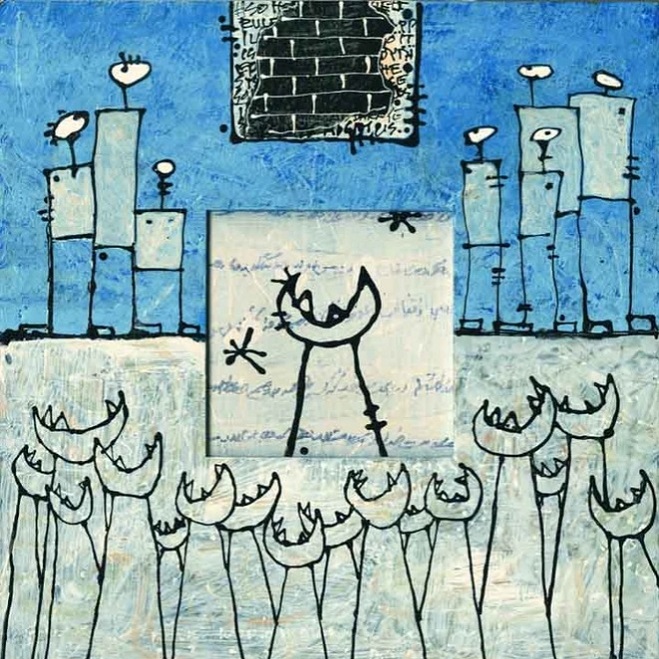The great artist AMIR SALAMAT paints fantastic worlds and complex abstract stories on small and large surfaces. But no matter how big or tiny the canvas, the wooden board or the wall is, it is always completely filled in a way that it awakens kind of new dimensions. The spice is in the detail. Exciting scenarios with a mix of historical characters from different cultures transport thoughts and feelings, often they are arguments about social issues and contain his dealings with them.
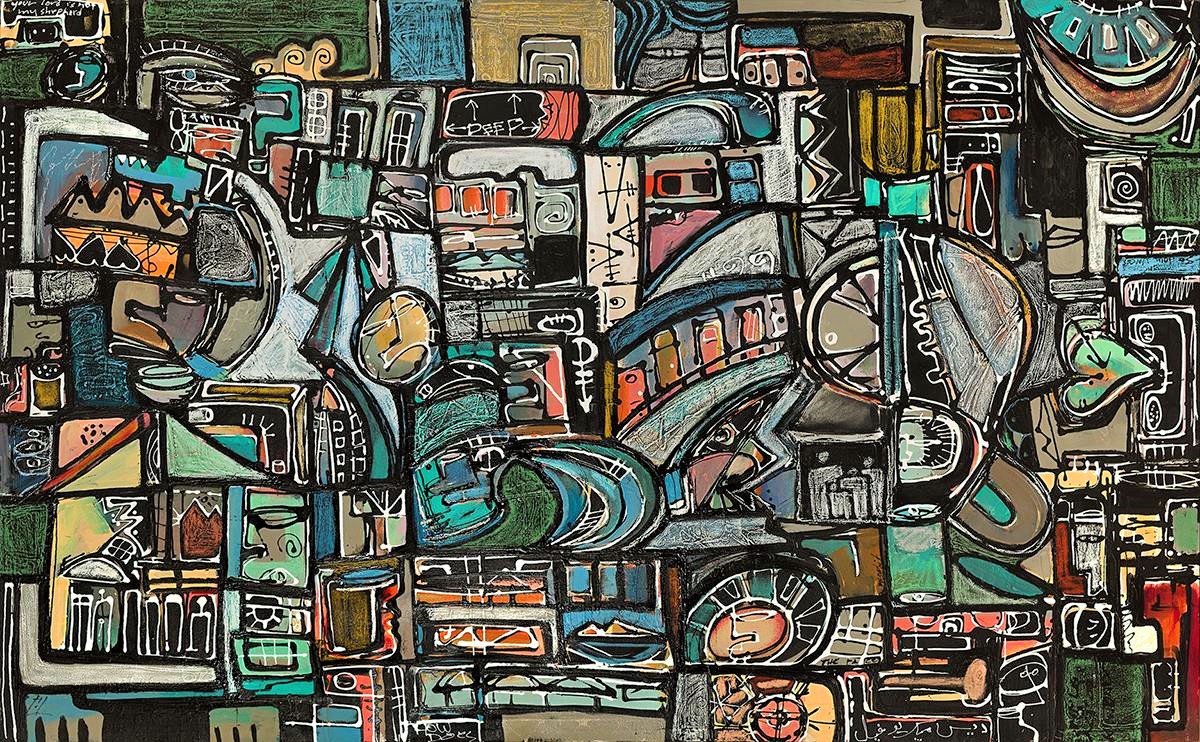
AMIR SALAMAT is originally from Iran, but he has been living in the United States in California for many years. Regularly there are interesting exhibitions and events where his artworks are presented, for example at the LORI AUSTIN GALLERY or at the OLI GALLERY. On the one hand he wants to show his creativity to other people, but at the same time he has the mission to make people think about the problems around us in a subtle but touching way. AMIR is also involved in the social organization MOMS AGAINST POVERTY and their projects. Besides the art shown here in this article, also have a look on what they do and support them, so they can support a lot more other children and those in need of help around the world.

We talked to the creative artist in an interview. You can listen to our conversation in the podcast, or if you prefer to read or if you speak another language, you can find the written version afterwards and read or translate it. Between the text are countless great artworks by AMIR SALAMAT, from canvas to wood and also the complete “Tiles Series”. There are as well two videos included, one about his sketches and another really interesting one is a portrait about the artist made by ROOZBEH JAFARZADEH. A big “Thank You” goes to the fabulous artist ANDREA JENSEN who connected us and made this interview possible.
You live now in California but you are originally from Tehran. Tell us more about how you started getting in touch with art.
I was born in Tehran, Iran, and my family was very receptive to art. My mom and dad both really encouraged it. We are a family of five children and I am the youngest. My oldest brother and my sister both were very good artists, so it was almost natural for me to be attracted to that. And from a very young age I was doing drawings and things like that. Around the age of 14, I started borrowing some of my sister’s oil paints and started doing some artworks. So that’s how it started.
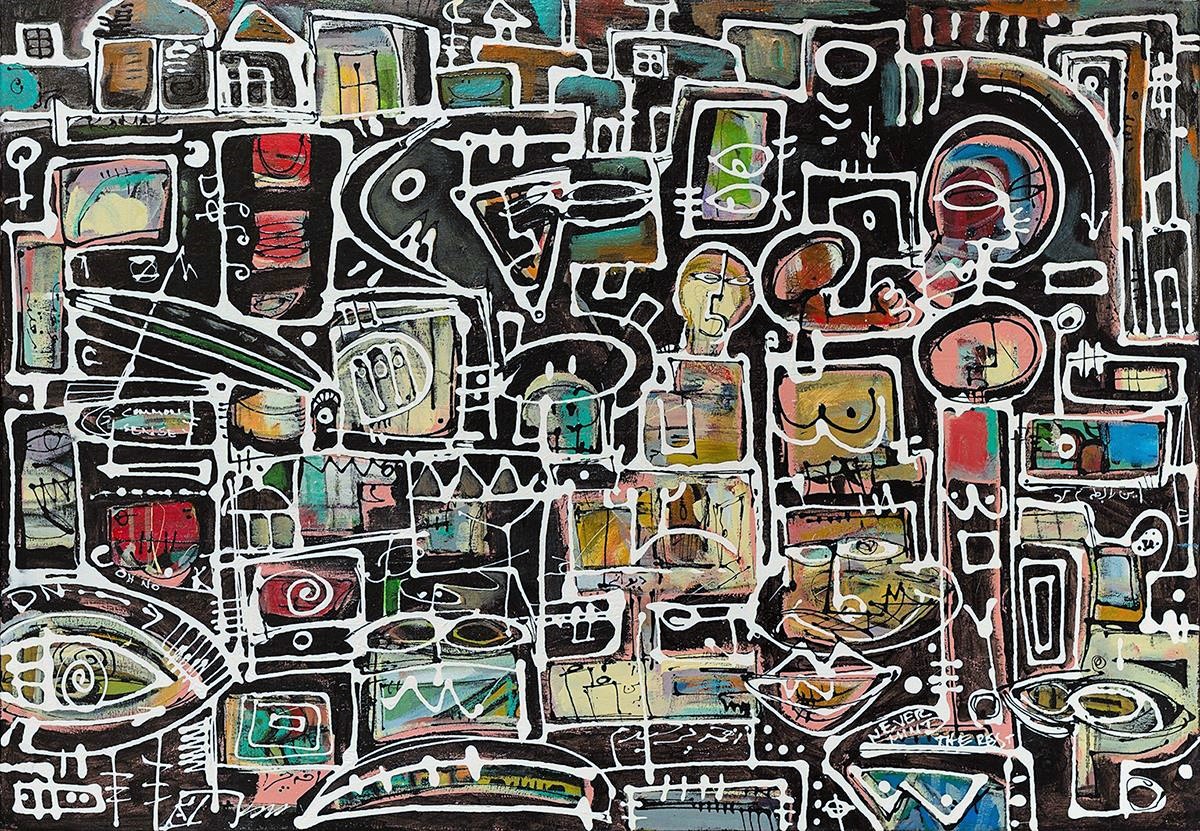
Great, already from the childhood. When the listeners want to check already, they can go on your Instagram and you also have a website. So people can have a first look on your paintings. With your art you went on oil and canvas paintings itself. so this art genre.
Right. The website is www.amirsalamat.com. There are some samples of my work. Naturally, you cannot put everything you create on the website because of the volume of the work I’ve done, but that pretty much gives a good idea of what my art is about.

You did not went on like performance or music, so you knew already since you were were a child that it is painting.
Yes, because as I said, my brothers and sisters, they were really, you know, very good artists. So you have a kind of a sample to follow. A lot of the things that I did later on and I’m doing right now are actually influenced by my older sister. But no, I do no other kind of art. As much as I love music, and I wish I knew how to play an instrument. And every time I work, that is a something that has to be there. The music has to be there when I work. But I never got into performance or music. I wish I did, but I didn’t. It didn’t work out like that.
I heard this a lot of times from visual artists that music is a very important part. While they create their artworks and while they are painting, and the music is a very big factor in getting inspirations.
Yes, sure, music is very important for me. When I work, it’s always there. It’s not just a quiet area. That quiet space that I need to work in, there I need to have something that kind of fills that void. And music is perfect for that. I have noticed that sometimes, depending on what kind of music I listen to, that can also affect what I do, the type of work I create.

You told me, when you came to the US, it was 1978. So how old have you been at this time or when were you born? And before coming to America, did you already do professional art in Iran? I assume it was complicated over there?
I was born in 1956, so I’m 65 years old. Well, in Iran being an artist is difficult, but over time it has changed to a better environment for it. But still the thinking was always that you are going to have a very hard life and all that as an artist. My home life was very receptive to doing art, but parents being parents, they want to protect their children and make sure their life is going to be easier than their own. I actually started going to college studying structural engineering and I have a master’s degree in that. But art was never separate from my life. Never. I was going to school, but besides that I was always painting and doing art.
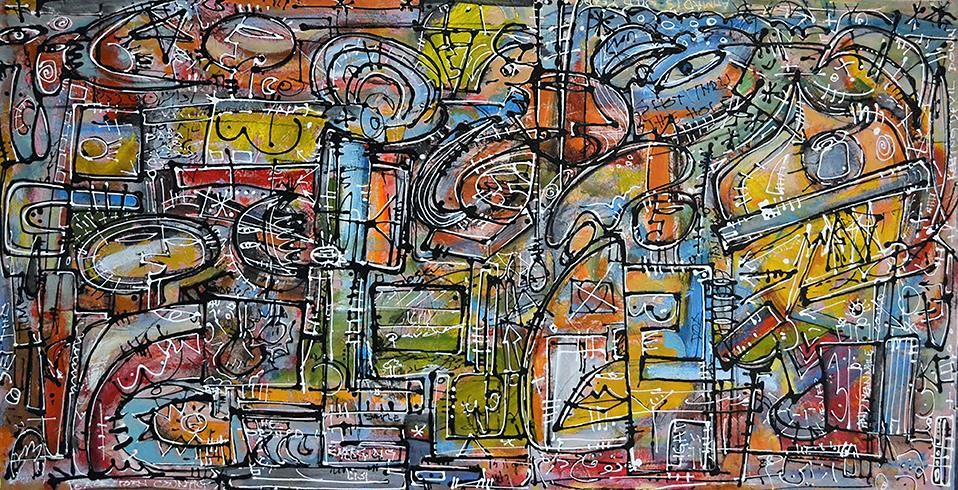
At first, let’s say it was like a companion and you had it always with you. But when was the point that you really started doing it professional and said, okay, I’m not an engineer, I’m an artist?
Well, I am. Believe it or not, I am still an engineer. Actually I am both and doing both. That’s why I don’t get much of sleep. I basically paint and do all of that. And later on when I came to the US, at some point, I got married and had children. So it was hard to just let go and just be an artist because you can’t force it in life on yourself and also not with children.
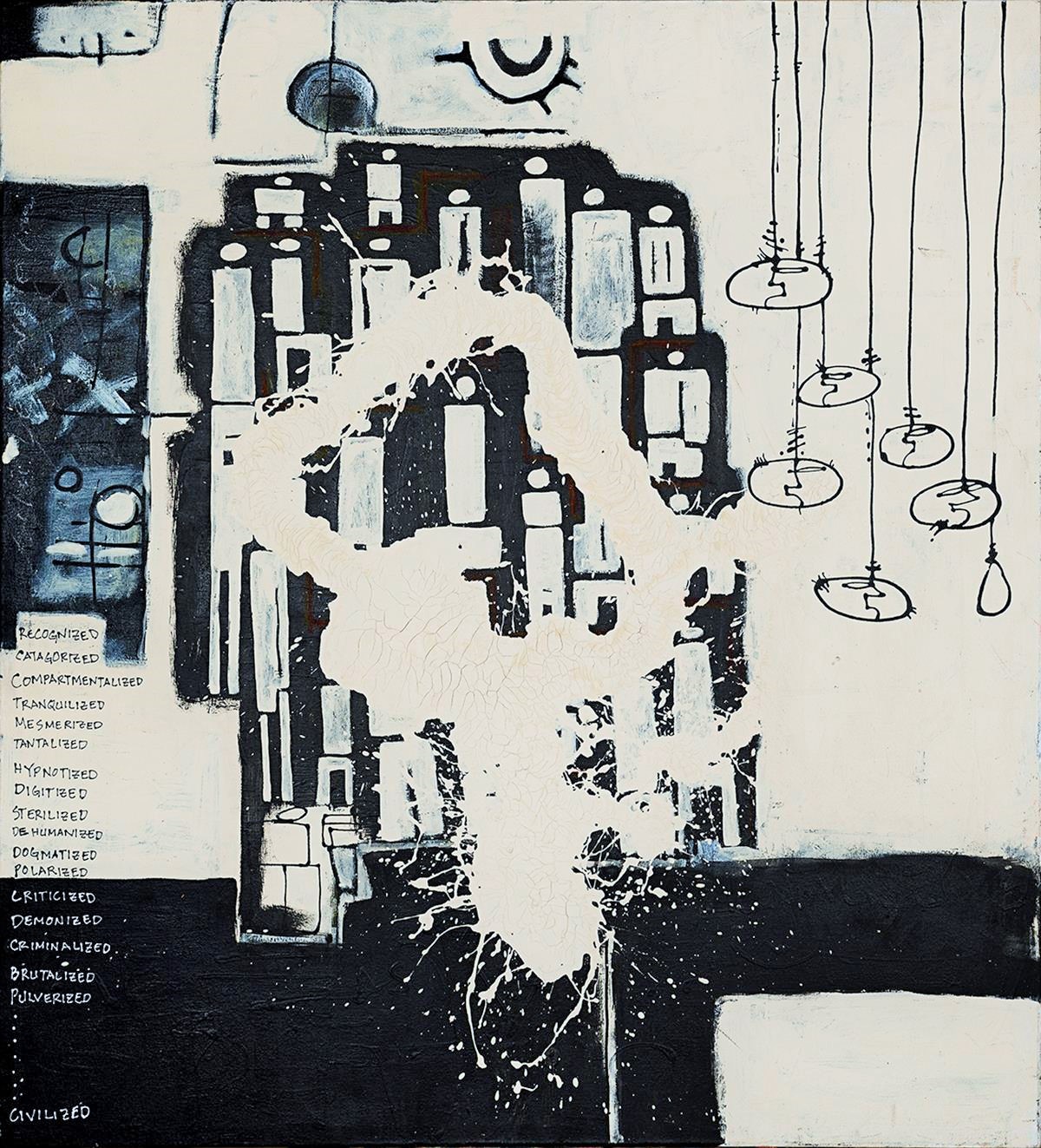
So you have to put in food in the in the fridge and pay the rent.
Exactly. It’s sometimes that you just have to, I wouldn’t say sacrifice, but you have to kind of control how much work you can do versus, the money that you have to bring. And, you know, art is wonderful and fantastic, but it’s something that people want, not need. When people don’t need something, they are more likely to spend money on things they need than something they want. Sure. So it was a cost conscious decision on my part to do both and provide for my family. My kids grew and they moved out, so now I have a lot more time to myself to do artwork. And actually just recently, about a week ago or so, I finished a rather large commission work. It is around 1.5 by 3 meters. So it’s kind of large. Sometimes I also do commission work in addition to what I create. But with the commission work, I can control the images and coloring and all of that. This work that I finished was for a family who want their story told on a painting, which is what I did.

Are your children also artists or creative as well?
My daughter could draw pretty well, but she never really continued in that way. She’s a writer, so it’s a different way of creativity.It is creative, but not in the sense of being a painter or anything like that. Well, my own mom and dad, they were very supportive and encouraging. My ex wasn’t an artist or nor she appreciated it that much. So yes, we did get married, but it didn’t work out. She did not say anything like, great, what a wonderful job you did and all that. And I think encouragement does a lot, does help a lot. And to motivate the kids or at least encourage the kids to do their art. But if it’s not there, then sometimes it just doesn’t happen.

But for you, you just couldn’t stop doing art, which means that it’s a strong part of you. Even if it was difficult to combine it with your job and the family, it was always there and you needed to do it. Like a glowing or an inner fire. And you really needed to give this part of you as well its space.
Yes. Well, to be honest with you, this is what I am. I also do other type of work, which would be some engineering, but as a person I consider myself an artist first and foremost. So it’s not something that I could just let go. Because you almost feel like you’re born with it and it’s a part of you. It’s not something that I would say, oh, I’ll wait till I’m fully retired and then I sit down and do some painting. It wouldn’t work like that for me. I always had to do art, always. Since I was a little tiny child. I remember that I wanted to do artworks, but sometimes life works out differently. So that’s what happened.

You said this really nicely because it shows it’s not just something you want to do for the moment or like a hobby. It is your passion. And to have a passion is not just like something you have for a few months.
Yes, I have a painting that I have in mind and I work on it with great conviction, but little certainty, which basically means that you have the conviction to do art. You may not know what you’re going to do, but you have that energy and drive that pushes you forward to do an artwork. And that’s something that you cannot really control. It just happens. So basically that’s how I feel about it. I have to do it. It’s not like that I could just put it aside and come back a few years later. It doesn’t work for me like that. I am in a situation that I have to paint and do work and all of that, and it’s a part of daily life basically.

Let’s keep on diving into your art a bit more and speak about your creation themselves. How do you make them? Before we said oil painting. So you are a painter, not a woodcarver or sculptor. So what kind of equipment or paint do you use? Do you only paint with oil and only with brushes? Or do you use also other instruments and materials?
Nowadays actually I use oil a lot less. And for some reason, as I have aged, I like things to happen a little quicker. So I do acrylic and latex and pastel and even charcoal or pencil on my paintings. When I started painting, one of my idols was Salvador Dali. So that’s the style that I started with.

I think Dali’s influence is recognizable in several of your artworks.
Yes. But then later on, I just wanted to have a little bit more room to try different styles and all of that. So I got away from that and started painting with the material I just told you about later on. What happened was that I felt that I like to write some things on my paintings, and I wanted to be able to write and scratch and remove and add or do all of that. So I also started working on wood. On wood panels to be precisely. Because it’s a hard surface, you can do a lot of things on it, whereas canvas doesn’t necessarily allow you to do that. For example if you want to put in deeper lines and things like that. So I tried that but after a while the wood became a problem, because when you want to ship your paintings, it becomes quite a challenge. Then I switched again from wood to canvas, but I found some kind of applicators. I got them before because I was also doing ceramic work. And these applicators you use to put draw designs on a piece of ceramic. But I thought, okay, maybe I can use these applicators, put paint in them and do the really strong lines which I want, also on a painting. So I mix a lot of these different objects and different material to do my work. So basically the thing that I use and a lot of times you see that in my more recent paintings, the lines which I tried to do with those applicators. It is not the easiest thing because amount of pressure you put in it, the amount of paint gets out. It works more or less and it’s a different kind of a control over it with those applicators. But I still use all of these materials together. The brushes and applicators and pastel and whatever it takes. It depends on the surface that I’m working on and what I want to show.

You mentioned before the room where you create and the space on the artworks. This got stuck in my head and at the moment I am looking on some of your artworks. From the perspective of the room and space on the canvas, it shows that you need more room, more space because you really want to fill it up. But you can also say the room you have on the canvas, you really use it absolutely and intensively. There are some paintings with a lot of really very detailed little structures, and you could zoom in a dozen times and it would always look like an own painting itself.
Right. I worked on a series for a while where I did about 40 pieces in that style. These are like smaller frames, small artworks and they are made on wood pieces, which would be the frame, but really wide. And then there was a piece of glass or mirror in the middle. So I would take the glass out and I would do a painting on that wood piece, which I called tiles.That is basically what I did. I did the perimeter first, then I would have to do a piece that would go inside. That’s the glass piece. So in a way they’re not done at the same time. So each piece had to match the other one and the subject had to be close. When you look at the artworks you can see there is a connection between them. But every time when I started a new one, I wanted to make it different from the last one I did. That’s why when you look at the series of tiles, even though they’re the same style and all of that, they also vary.

First I thought because you named them tiles, that they were actual tiles and you painted those tiles. But they are actually two paintings in one. Like a sandwich painting, you could say.
Right, right. The piece in the middle is done separately. And all of them are acrylic and wood or glass. When I called them tiles, maybe that wasn’t the proper word. I know in one of my exhibitions somebody called them that, so I said, hey, that’s not a bad name. They do look like tiles, they are squares and all of that with designs on them, but they are actual separate artworks which put together by pieces and in the center are paintings. So two in one.

But not only two paintings in one painting, because the combination of them is again a third new painting. So actually there are three paintings.
Yes. I’ve even had people who came to me and said, I want this one, but I want it much bigger. I said, well, you know, I wouldn’t do it on wood because much bigger would make it very heavy. And some people don’t want that in their place. So then I have actually done this on canvas. It’s not the same effect in terms of being two pieces. When you look at these up close, you can see that they’re one surface. It is different from the other style, but when you do it on a canvas, it is basically a flat piece. There’s no indentation or anything.
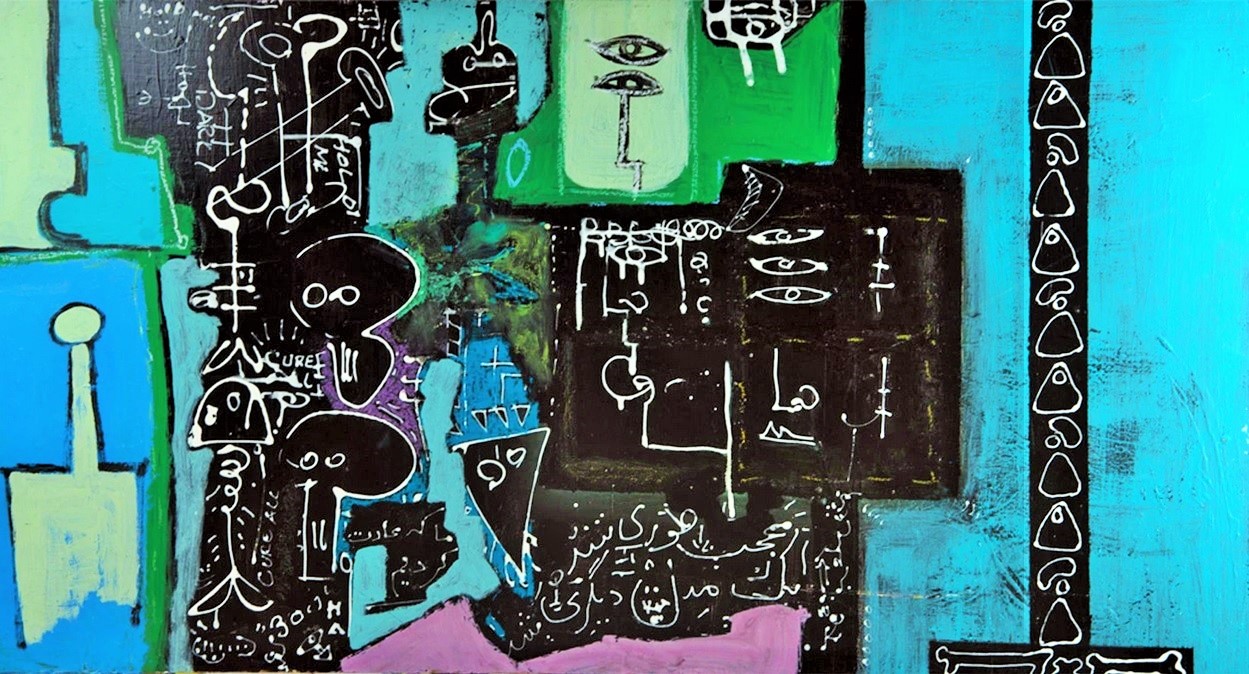
I especially look on the tiles, you made it really nice. It’s like a slideshow and you see one after another. There are some parts which emerge more often. And I get the impression of ancient history, like hieroglyphs or like some writings from the past. You have this calligraphy part and you use this on some paintings as well you use elements which reminds me of an old African culture. The some other paintings look like they could also be made in a cave by cavemen thousands of years ago.
Well, the thing about it is that I really love African masks and African art. And I actually saw an exhibition at the Young Museum in San Francisco, which showed statues and artwork from Oceania, like from New Guinea and those places, more of a primitive art, I would say. In addition I also have several books about art from Africa. The thing that I like about them is that with minimum use of material or colors, they do actually have a lot of strength. When you look at an African mask, they can really express a feeling or an emotion. The style of art is very primitively but extremely strong. So that’s something that I like about that kind of art. And basically when I do my own paintings, I have used some simplified forms that you see probably in some charts and in my paintings. I like that and there are different characters of people and depending on their shape, they have different roles, they represent different groups of people. So without getting too much into the showing, all the emotions on the contortion of the faces or the body on my paintings, I do it with how I place these things and what kind of a role I assign to those characters. And a lot of them have been affected by more primitive art because I found those to be very expressive, like even shapes that people draw on a wall of a cave. You can see that. And with very few lines they were able to express what they were doing, which is to me a brilliant way of communication. You can tell a story without being so hung up on the details of the thing. I’m not saying that it’s wrong, but what I’m saying is that is just what I’m more attracted to and my work is basically affected by that.

It’s about the whole composition itself. And I still have the word room or space in mind, which I mentioned before. And I thought about like the room I am sitting in at the moment. So you can put a lot of stuff and boxes and a lot of crap in into a room. And then you feel like it’s really narrow and you don’t have any space, but you can also put really a lot of stuff in it, but it depends how you arrange the stuff. And then it can even be a strong room with a lot of things, but it depends how you position it. And that is the same with your paintings. There is really a lot of stuff on it, but you don’t get the feeling that there is too much on it. You get even the feeling in some way that you open the space into a bigger dimensions. There is so much on it, but you don’t feel that it is narrow or squeezed. It is quite the opposite and you think, wow, there is so much space and things on this little square. And I think this is what you said before with this power, that there is an energy in this. They are really totally filled with things, but they are very enjoyable to watch and have something positive and energetically with them.
Thank you and yes. You know, sometimes you want to tell a story and a story is not necessarily just a few lines. And the way I go about it, is to basically take different things and put them together and bring about something that the painting has to tell. I’m not saying every painting that I do has a message in it. Sometimes I just paint for the sake of painting, and that is when I just sit down and start and just let the painting come together by itself. And each painting has a life of its own. So as much as I control what goes on the painting, the painting itself also has its own message that controls what needs to go on there. Sometimes I just want to draw something, like a composition without having any kind of a message to it. So I leave that open depending on when I’m working and what gets put together.I also did a bunch of paintings that are done on really odd shaped pieces, meaning they’re like narrow and tall or really wide, but not too much height on it. Some of them are like only 20 cm wide by almost 2 meters tall. So it’s very narrow but really tall. With those paintings I wanted to tell a story coming, let’s say, from the top to the bottom. But also I wanted it to get read differently because when we look at a painting and the way how the eye moves across the surface, that is also controlled by the shape of the painting. So when you have something narrow and tall, with height or short but really wide, you can always tell a different kind of story. And the way our eye goes over the painting is basically with the narrow and tall. You mostly look at the top, but you can also start at the bottom and then you see the things stack up on top of each other.

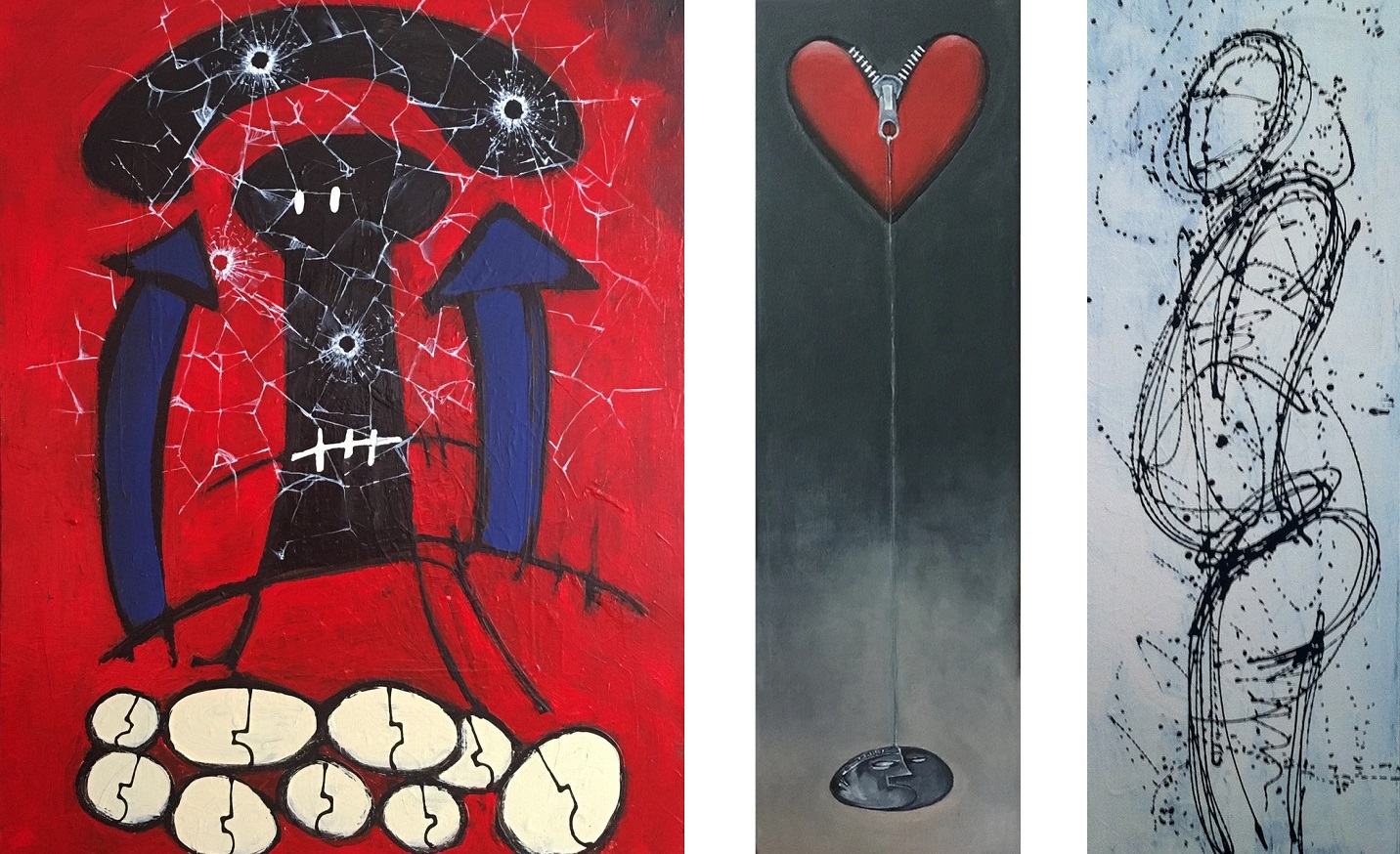
It’s very interesting how you explain those artworks and while you speak I am watching them at the moment. And yes, like you explained, some go from top to down and they’re really narrow and really high. Then the others are from left to right. This is the kind of influence you have as an artist. Most paint on the usual sizes, but you just really broke out of this circle. And in this way you force the visitor to watch the painting that way. But they can also watch from down to top and then the story changes again. And you really put a message in it and you describe a story.
So I like to sometimes challenge myself like that to force myself to do that. Like ok, now I’m going to attack this painting from a different angle. It’s not just a square or rectangular surface, but it’s a really challenging shape. Meanwhile, keeping my own style on it, I also put together some paintings which are designed to go to a corner of a room. So when the two walls come together, it goes right at that point. And the interesting thing about that is that that wood frame and the wall and then whatever you put in the middle, so the result is a different kind of art. I like to have some challenges sometimes and see how it turns out and work with different items.


I have to think now about Egypt and the pyramids. Like I said before, the word hieroglyphs. They are graphic symbols but also written messages. The first scientists who studied them, in the beginning they didn’t know what which symbol means, but one of the first clues was that there is a direction how to read it.
Right. I also look at the painting, not just as something calculative, which should be on the wall, but also as a form of communication. You basically are communicating with your observer from a different way.


So then let’s switch from the style to the actual message. So what do you want to communicate to the visitors and what are the messages in your paintings?
Well, it changes from one painting to another. But what I like to do in a lot of them is that I hardly ever get into like expressing just feelings. A lot of them have to do with the social issues and things that happens around us. And it may not be obvious in the first view what I’m trying to say. But once you get into it a little bit, then you see that there are other things that I’m trying to tell through the painting. So mostly a lot of them are social issues. A lot of them are just thoughts that I have, things that I hear about or books that I’ve read. I read a book by Bertholt Brecht and his play name ”Round Heads and Pointed Heads”. That just stuck in my mind. And then later on I put my thoughts about it into a painting. So which is supposed to somehow deliver what I supposed the message of the play was. Sometimes it’s like that. Sometimes I hear a sentence that it’s just stays with you and you just go over it and you try to create and put images to that thought or sentence you heard or the thought you came up with. And a lot of times these things are about social issues. But then again, there are a lot of times just thoughts that come to my mind. All those thinkgs I want to express on a piece of canvas or board.

There are different layers on your paintings, like the tiles you made, like with an onion. There are more levels behind. And because you said there is also some social criticism in it. I had this word connection in mind and that all humans are a connection in some way. But at first you cannot see it clearly. Obviously it looks more like a total chaos, like a labyrinth. But the connection is there to everybody at many levels. And you bring this complexity in the painting, but it doesn’t disturb the observer. You never have a feeling that any part of the painting, any piece, doesn’t belong to the painting. Also you have the feeling that there is really a lot and it’s very complex, but it’s not too much and it is like an organism. It all depends to each other. And maybe this is also the feeling you want transport in your artworks. To see the complexity but also the connection and that we are a huge organism. What do you think about my interpretation?
The one thing I like to do is not to have people think what I think myself. I can explain my position to them, but I like to also get feedback from people like you at the moment for example. That’s an interesting feedback. There are other people who look at my work and there’s another feedback, and I’m quite comfortable with people having their own images. But what you said makes a lot of sense. You know, a lot of what I create, I do that unconsciously and there are some things which I just go about it or just do it. So yeah, I like your interpretation and what you said about it.
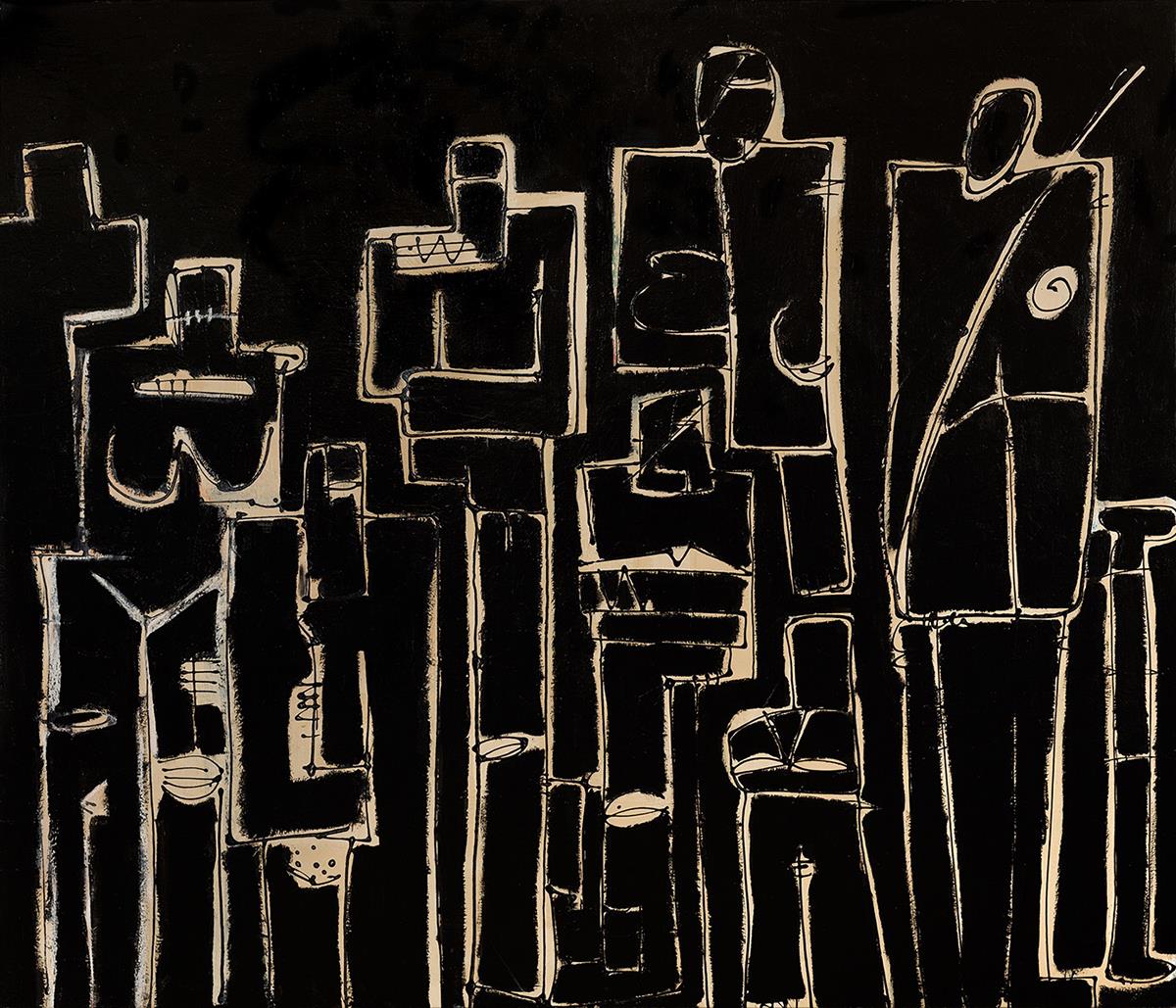
This is now another interesting part, because you said you want to keep your artist thoughts in the background and you want to leave open space for everybody else to make his or hers own interpretation of your artworks.
Exactly. I want to leave the door open so people can come and explore. That’s the whole idea. There is a lot on my paintings and they have a lot of different elements in it. And it’s really interesting when I put it on the wall and then I leave it up to the visitor to make their own observation about the painting. The good thing about it is that when this person makes a connection with the painting, it’s very satisfying to them to have that feeling, to have a connection. And I as an artist, I do appreciate it when people come to me and talk about my paintings and all of that, it is really satisfying to know that people are actually connecting with the work, which is very important to me. When I paint, I don’t necessarily think that I’m going to please everybody and all of that. That’s not my intention. I am going to do what I like to do. They may make a connection with one painting, whereas other people would connect with a different kind of a painting. I would enjoy getting feedback like the one that you told me and also from other people. The readers and listeners can look at them and I am happy about receiving feedback. I just hope people get to become familiar with the work I do.

It is very interesting what you what you told us about your art. And if people are also interested and want to see more about your art they should visit your website. They can also check the Instagram channel. There are frequently new photos, and if they are somewhere in California around, they can go to galleries where are exhibitions with artworks from you.
I have some pieces being shown in two galleries. One is Lori Austin Gallery in Hillsboro, California, and the other one is on the Only Gallery in Guerneville, California. And some more of my work may be shown in a gallery in Petaluma. I hope that people get a chance to go visit my website www.amirsalamat.com and if they have questions or comments, I would be more than happy to accommodate that.
Portrait Video – Made by ROOZBEH JAFARZADEH
Amir Salamat about himself on his website: “I have learned much from my mistakes and failures as an artist. Through each I have found new possibilities that has shaped the way I look at things and the way I approach my art. I love change. I love looking, searching and learning. World is so boundless in all that it can offer. There is much to learn. Love knowing of and being inspired by other people and cultures and the amazing extent of human’s imagination and the will to create provides much inspiration. I despise conformity and having to work with restraints. Restraints are a part of life, but the restraint on creativity are self-made and damages ones attempt at honesty. Being an artist is difficult. When you present your art, you are exposed. You just showed the result of hours of being you. Your intimate time spent on creating. In creating art for me, the process is what matters. The journey. It stays private. You start with a blank surface and you make something of it. I was born an artist. I was born with a will to create. There was no escaping that. I was also lucky. Lucky to be born into a family that promoted and encouraged art.”
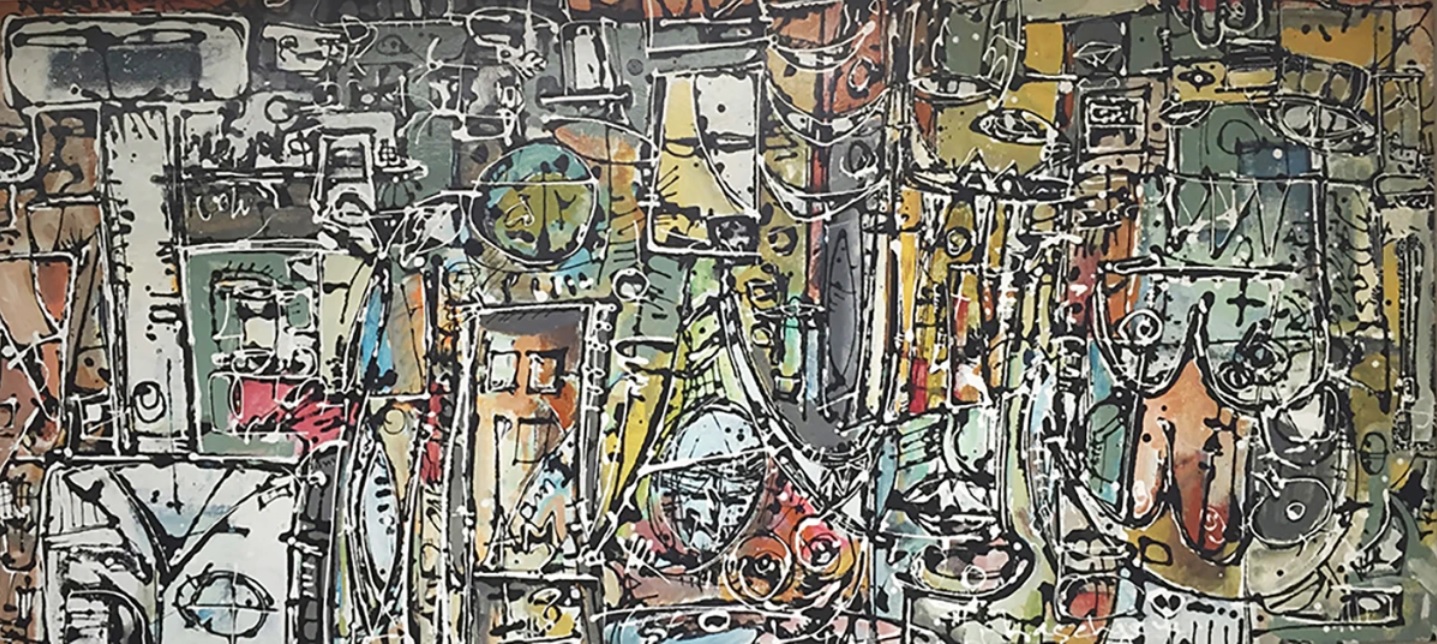
![]() Artist: AMIR SALAMAT
Artist: AMIR SALAMAT
![]() Website: https://www.amirsalamat.com
Website: https://www.amirsalamat.com
![]() Facebook: https://www.facebook.com/amirsalamatart
Facebook: https://www.facebook.com/amirsalamatart
![]() Instagram: https://www.instagram.com/amirsalamatartist
Instagram: https://www.instagram.com/amirsalamatartist
![]() Twitter: https://twitter.com/amirsalamatart
Twitter: https://twitter.com/amirsalamatart
![]() Pinterest: https://www.pinterest.de/ms2566
Pinterest: https://www.pinterest.de/ms2566
![]() Youtube: https://www.youtube.com/@Donotstealart
Youtube: https://www.youtube.com/@Donotstealart
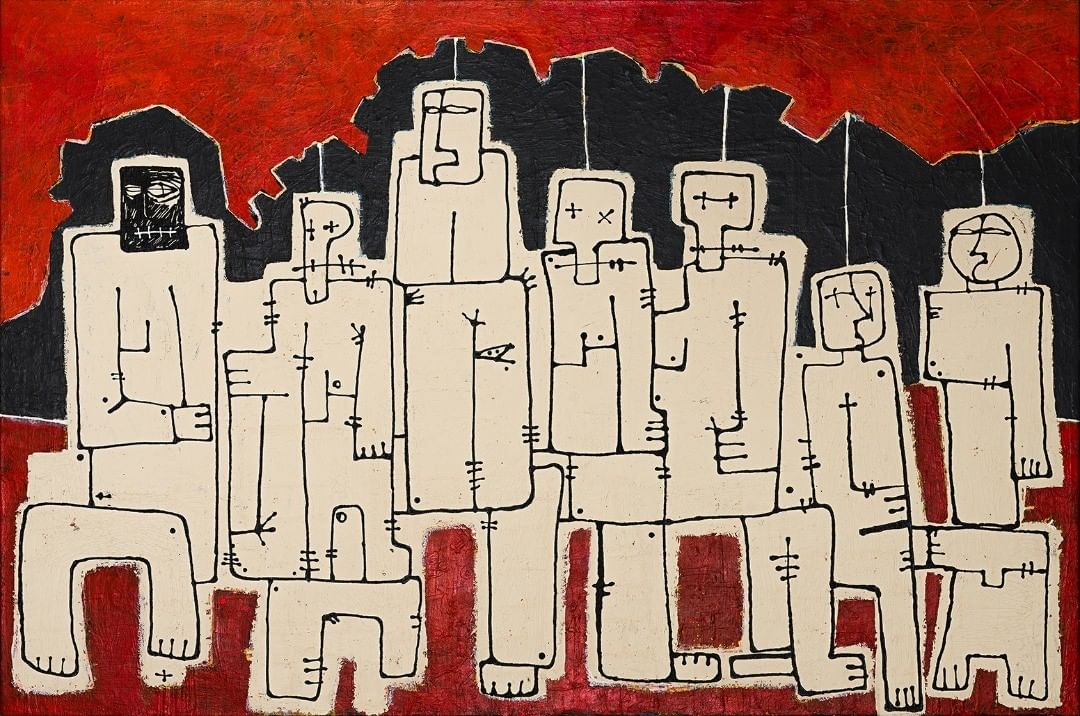
![]() Gallery: LORI AUSTIN GALLERY
Gallery: LORI AUSTIN GALLERY
![]() Website: http://loriaustingallery.com
Website: http://loriaustingallery.com
![]() Facebook: https://www.facebook.com/people/Lori-Austin-Gallery
Facebook: https://www.facebook.com/people/Lori-Austin-Gallery
![]() Instagram: https://www.instagram.com/loriaustingallery
Instagram: https://www.instagram.com/loriaustingallery

![]() Gallery: OLI GALLERY
Gallery: OLI GALLERY
![]() Website: https://www.oligallery.com
Website: https://www.oligallery.com
![]() Facebook: https://www.facebook.com/OliCurator
Facebook: https://www.facebook.com/OliCurator
![]() Instagram: https://www.instagram.com/oli.gallery
Instagram: https://www.instagram.com/oli.gallery
![]() Instagram: https://www.instagram.com/oligallery
Instagram: https://www.instagram.com/oligallery

![]() Social Organization: MOMS AGAINST POVERTY
Social Organization: MOMS AGAINST POVERTY
![]() Website: https://momsagainstpoverty.org
Website: https://momsagainstpoverty.org
![]() Facebook: https://www.facebook.com/MomsAgainstPoverty
Facebook: https://www.facebook.com/MomsAgainstPoverty
![]() Instagram: https://www.instagram.com/momsagainstpoverty
Instagram: https://www.instagram.com/momsagainstpoverty
![]() Tik Tok: https://www.tiktok.com/@momsagainstpoverty
Tik Tok: https://www.tiktok.com/@momsagainstpoverty
![]() LinkedIn: https://www.linkedin.com/company/moms-against-poverty-map
LinkedIn: https://www.linkedin.com/company/moms-against-poverty-map
![]() Youtube: https://www.youtube.com/map4kids
Youtube: https://www.youtube.com/map4kids

MORE ARTICLES ABOUT THE USA
>>> Streetart Map Los Angeles <<<
>>> Streetart – Atlanta <<<
>>> Streetart Asheville <<<
>>> Mural Artist LITUMAISM <<<
>>> Sonny Lee L – Digital Painter <<<
>>> Artist Marc Kennedy <<<
>>> Artist Charles Samuel Wait <<<
>>> Painter Andrea Jensen <<<
>>> Manhattan Street Life <<<
>>> Streetart NY Upper Eastside <<<
>>> Atlanta – M.L. King City <<<
>>> Streetart Las Vegas Downtown <<<
